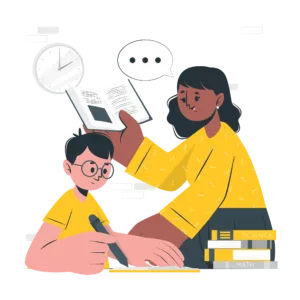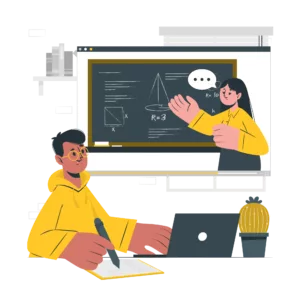Virtual learning is invading the world with its new teaching methods that appeal mostly to the current generation who has become more technology-addicted. However, this invasion has come with many challenges that should be handled properly. The following are examples of the challenges of the virtual classroom:
The Need to Use Technology in the Virtual Classroom
Many educational centers or institutions find it a bit challenging to shape a software system or an app that fits both their needs and the needs of their students. It is not an easy task to select the app or the features that are well-suited for the virtual classroom.
Check Storky apps features at https://storkyapp.com/en/storkyapp-features/
Parent’s Awareness about Online Learning Is Needed
It is time for parents to be aware of the importance of learning and getting updated continuously with technological progress. Many institutions provide training for parents on how to use their software apps so that they can train their children accordingly.
Moreover, parents should prepare a proper classroom for their children at home. The place should be quiet and away from any distractions. Furthermore, they have to provide their children with all the tools they may need during the virtual classroom session.
Students May Feel Isolated During the Virtual Session

Actually, students always need social interaction that helps and encourages them to learn. However, this can be easily overcome by using different ways to increase their level of engagement. For instance, students can use the chat rooms to answer questions or discuss topics. They can be engaged in games and activities that enable them to interact with both their teachers and classmates.
See also our related topics:
–Best Way to Create a Learner Centered Virtual Classroom
– Your Step-by-Step Guide to Build a Virtual Classroom
– Real Classrooms vs. Virtual Classrooms: Which Is Better?
– Can Virtual Classroom Really Facilitate Learning?
Storkyapp features the following five challenges in the picture:
Disabilities to Read Facial Cues Is one of the Biggest Challenges of the Virtual Classroom
- In a physical classroom, instructors can see students’ non-verbal cues. Facial expressions can help teachers change and improve their way of teaching. Students’ level of engagement can be detected by observing their facial expressions and body language. However, this procedure is not a perfect one inside the virtual classroom.
- In a virtual classroom, instructors are unable to observe students’ facial cues as many students do not open their cameras and prefer to use audio. Also, they can’t focus on each student at the same time through a small screen. This problem can be handled by using different engaging activities that inspire students to interact and make them open the cameras of their own volition. Teachers can call students one by one to answer questions and to make sure that they are present.
- Instructors should break the barriers during the virtual classroom so students can have the confidence to ask questions and participate.
- The face-to-face communication that is provided by the physical classroom can be implemented during the virtual session by using chat rooms and video conferencing where students can collaborate and compensate for the social interaction that they get in the on-site classroom.
- In a virtual classroom, synchronous communication is used as a channel of communication that students use to interact with their students and their instructors.
- In a physical classroom, educators are keen on understanding their students’ non-verbal communication to support them in learning. Similarly, they tend to be good non-verbal communication senders and avoid giving any negative signals to students that may hinder their learning process.
Fewer Physical Tools Available for Online Learning Students
The virtual classroom has a different environment than the physical classroom.
To maintain students’ engagement during the online session, the same physical resources such as voice, video, and presence should be used.
The following are some tools that can make up for those of the physical classroom:
- A good headset
- The availability of appropriate software tools
- The usage of a good webcam
- Use of whiteboards and screenshots to grab students’ attention
Absence of the Academic Environment in Home Schooling
Studying in the conventional classrooms has its pros and cons. One of its biggest advantages is that it forces students and parents to be committed. They have to abide by the schedule and place of learning. Moreover, there is a uniform to wear at school. Even universities require a specific dress code. This is the opposite in the virtual classroom.
Here are two of the concerns that need to be addressed:
- Absence in the Virtual Classroom
Due to the recent virtual transition in learning, many students still cannot adapt to this new method of learning and consequently, the absence rate has increased notably. Students have some sense of uncertainty as virtual learning is something that is newly introduced to them. They do not know the outcome and hence do not have enough confidence.
Therefore, educators should set rules for absenteeism as they used to do in the physical classroom. They have to monitor the attendance and know the students who are engaged.
This procedure will make students and parents more attentive and responsible.
It can be included in the overall assessment of students. An effective way to assess whether students’ performance is getting enhanced or not is to depend on the following metrics:
- Contact
- Collaboration
- Connectivity
- Engagement
However, some educational experts have explained some ways for teachers to monitor absenteeism. One of these ways is to be more empathetic by contacting students and asking for their reasons for absence and trying to help them.
- In a physical classroom, students are given a specific regulation to follow. The environment is highly structured and students can learn easily in the presence of a class teacher. This problem can be handled by improving students’ level of engagement in the classroom.
More Parent Collaboration Is Needed in Online Classrooms
In order for the virtual learning process to be successful, there should be a strong partnership between parents and schools.
- Parents should understand that both the physical and the virtual classrooms are equally important.
- Parents should encourage their children to learn more about technology.
- They should track their children’s performance and help them improve.
Mark Stevens and Jered Borup have mentioned parents’ role in virtual learning in their article titled “Parental Engagement in Online Learning Environments: A Review of the Literature.” They mentioned four types of parents in their article which are the following:
- Parents who know their basic responsibilities such as providing their children with their physical needs like food, water, clothes,…etc. Also, they provide them with school supplies.
- Parents who are always on track need to know their children’s progress and work according to the feedback they receive from teachers.
- Parents who guide their children at home while doing their homework, projects, and activities.
- Parents support children by attending and taking part in school events.
It Problems That May Hinder the Virtual Learning Process

The following problems may emerge from the virtual classroom:
– Bad internet connection
– Lack of technical knowledge
– Usage of inappropriate software apps
– Some students live in rural areas and cannot have a smartphone or an internet-enabled device.
The Following Solutions Help Reducing Such Issues:
– Schools and universities should provide help for needy students.
– An IT training guide should be given to both students and parents.
If you have extra time on your hands, do not miss the chance and start your free trial hours by subscribing to Storky at https://storkyapp.com/en/.
